Virtual Reality Laboratory
Explore, learn and create using cutting edge tools for virtual and augmented realities.
Client
University of TwenteYear
2014 / 2020Responsibilities
UX Research & Design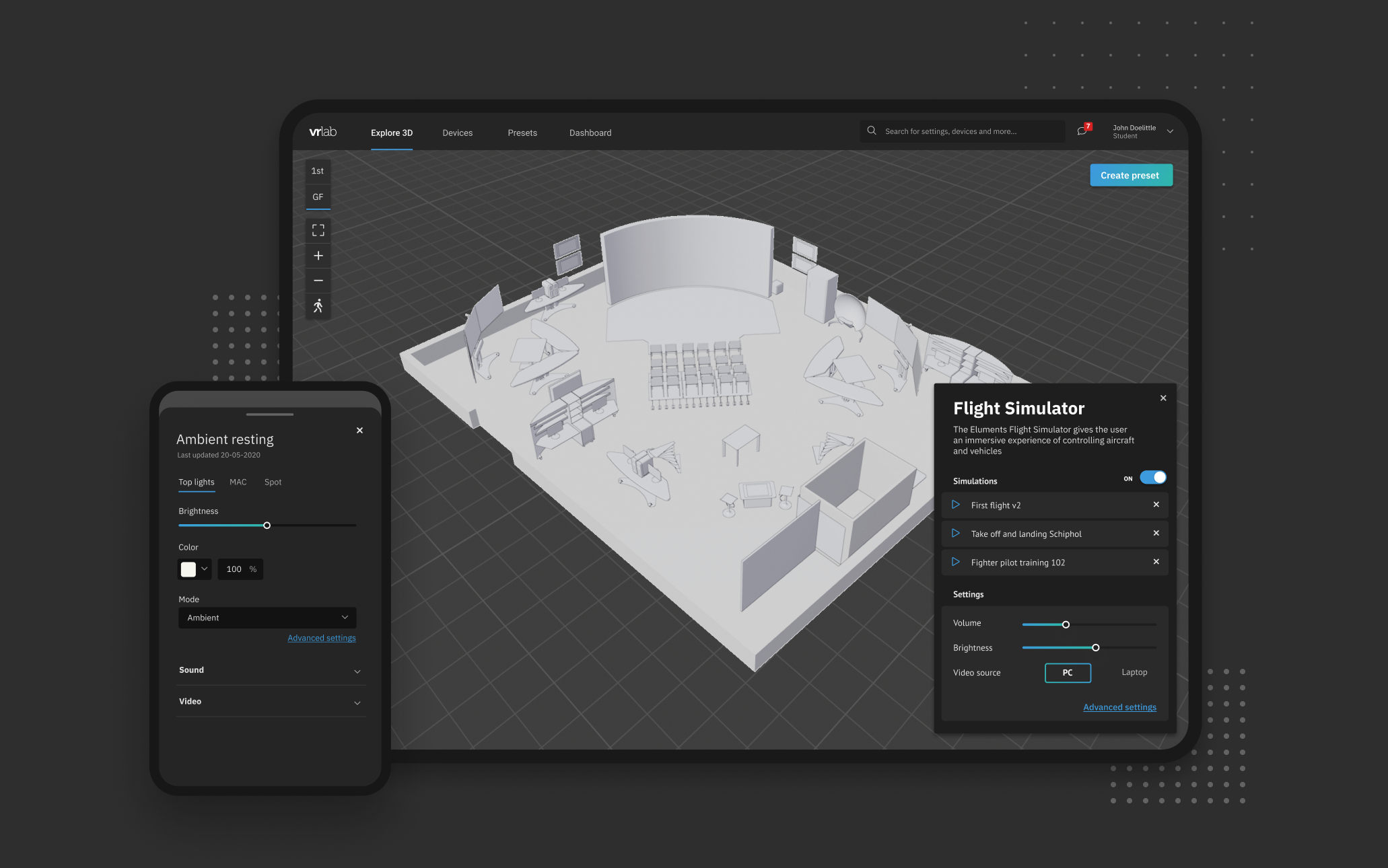

The Virtual Reality Laboratory of the University of Twente offers students and reseachers modern tools to collaborate with augmented and virtual realities. Over time, the growing opportunities of new technologies have come at the cost of usability. This project aims to democratize the vr-lab by supporting the independent use and exploration of the vr-tools and thereby create an open and accesible place for collaboration.
The research and conceptual design originated in 2014 in my bachelor graduate assignment. Recently I have updated the visual design to demonstrate newly acquired skills in a relevant context.
User Research
The vr-lab is a place that is used by students, researchers and broad range of external companies. Each has their own objectives and expectations of what the lab has to offer. To get started in the right direction, I have conducted 5 interviews with representative users to discover what they try to accomplish and what their specific needs are in reaching their goals. Three main research questions:
- Who are the main users of the vr-lab?
- What are their main jobs?
- What are the primary pain points in using the virtual reality lab?

The needs focus on exploration, collaboration and identification of issues. To most users it is not clear how devices in the lab are related, which makes it hard to create a mental model that helps to operate the lab. Moreover, controls are distributed over multiple systems, accessible through different interfaces and provide little feedback. Most of these problems are interrelated and boil down to the need of a single, clear and transparent overview of the lab's controls and status.

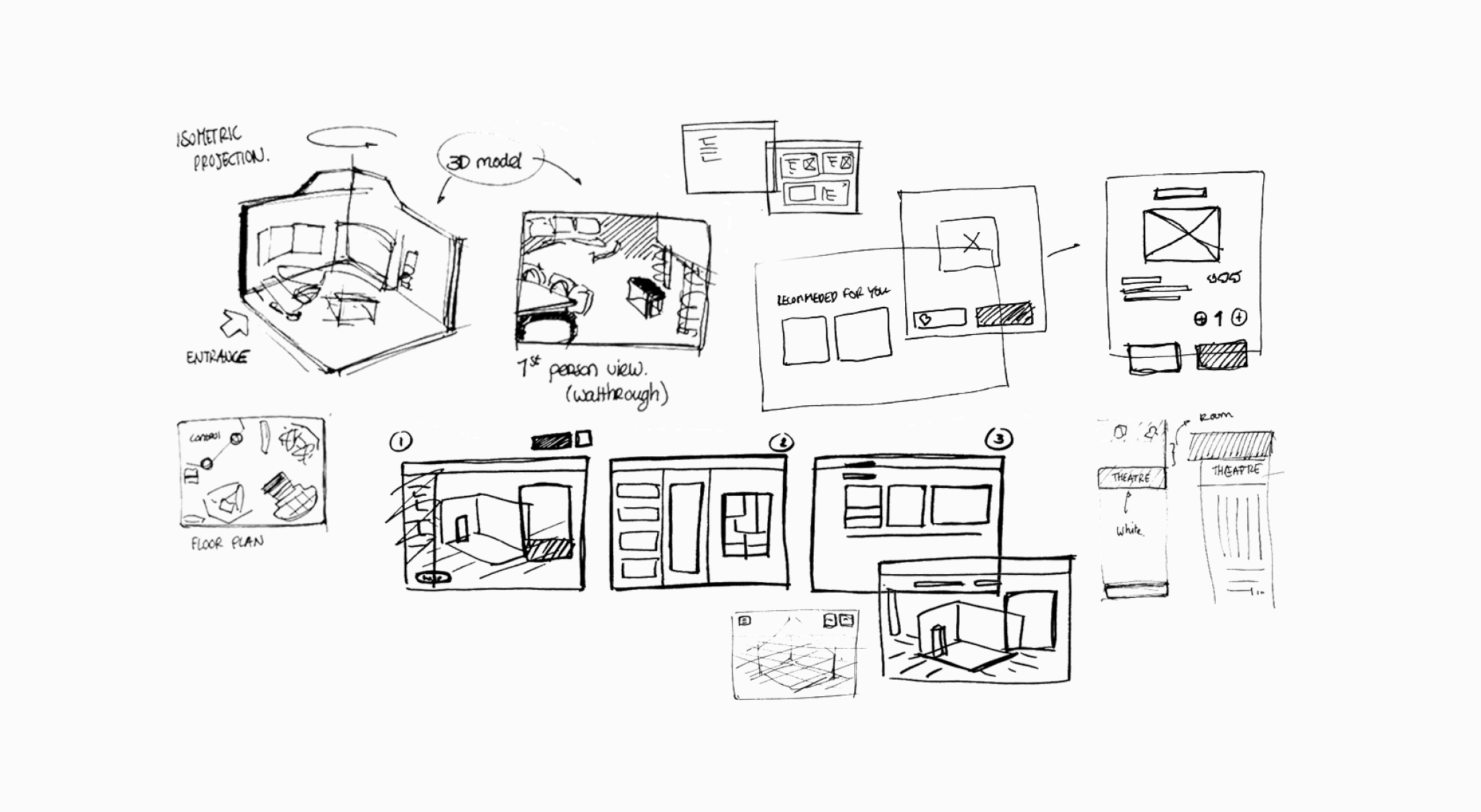
Immersive experience with explicit navigation
The central idea of the solution is to use a 3D model of the vr-lab itself to operate and explore. Now a user does not need to understand the underlying relations, but instead can simply point to a device and directly change settings. I used low-fidelity wireframes to test two alternatives to structure the navigation. In total 8 users participated in a moderated usability test.
The results show a difference in the number of mistakes users make, but the sample size is too small to draw definitive conclusions. However, I measured a clear learning effect showed by the cumulative task completion time decreasing for both concepts. I went further with concept A, because it better shows the relation between the settings and the 3D model as interface.
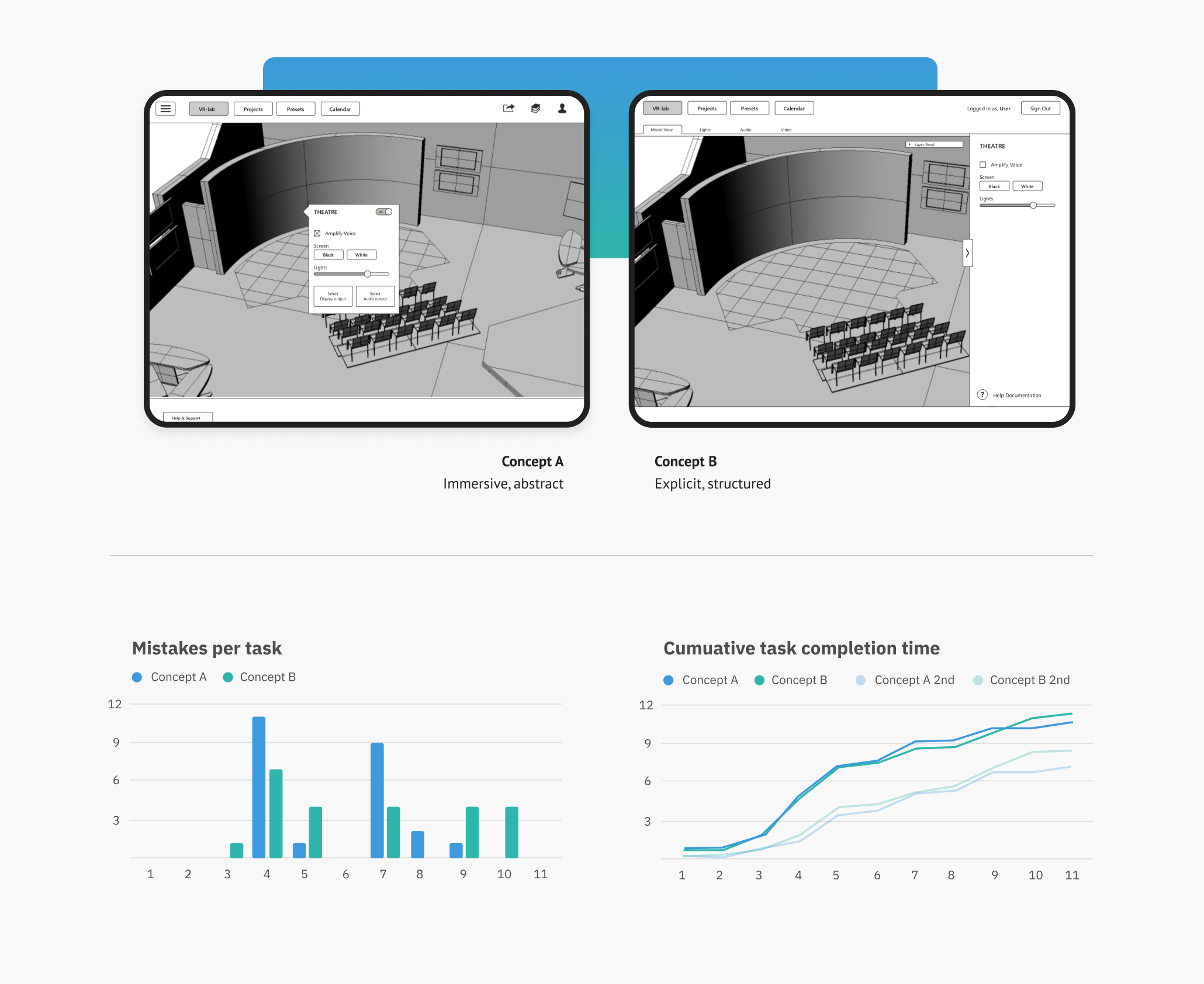
The lab itself as a VR experience
The 3D model allows interactive discovery of the lab’s devices and settings. It is here designed for exploration on a tablet, but in the future the setup is suitable for a VR walkthrough which can be done remotely. This is especially interesting for external companies that want to get a feel of what the vr-lab has to offer.

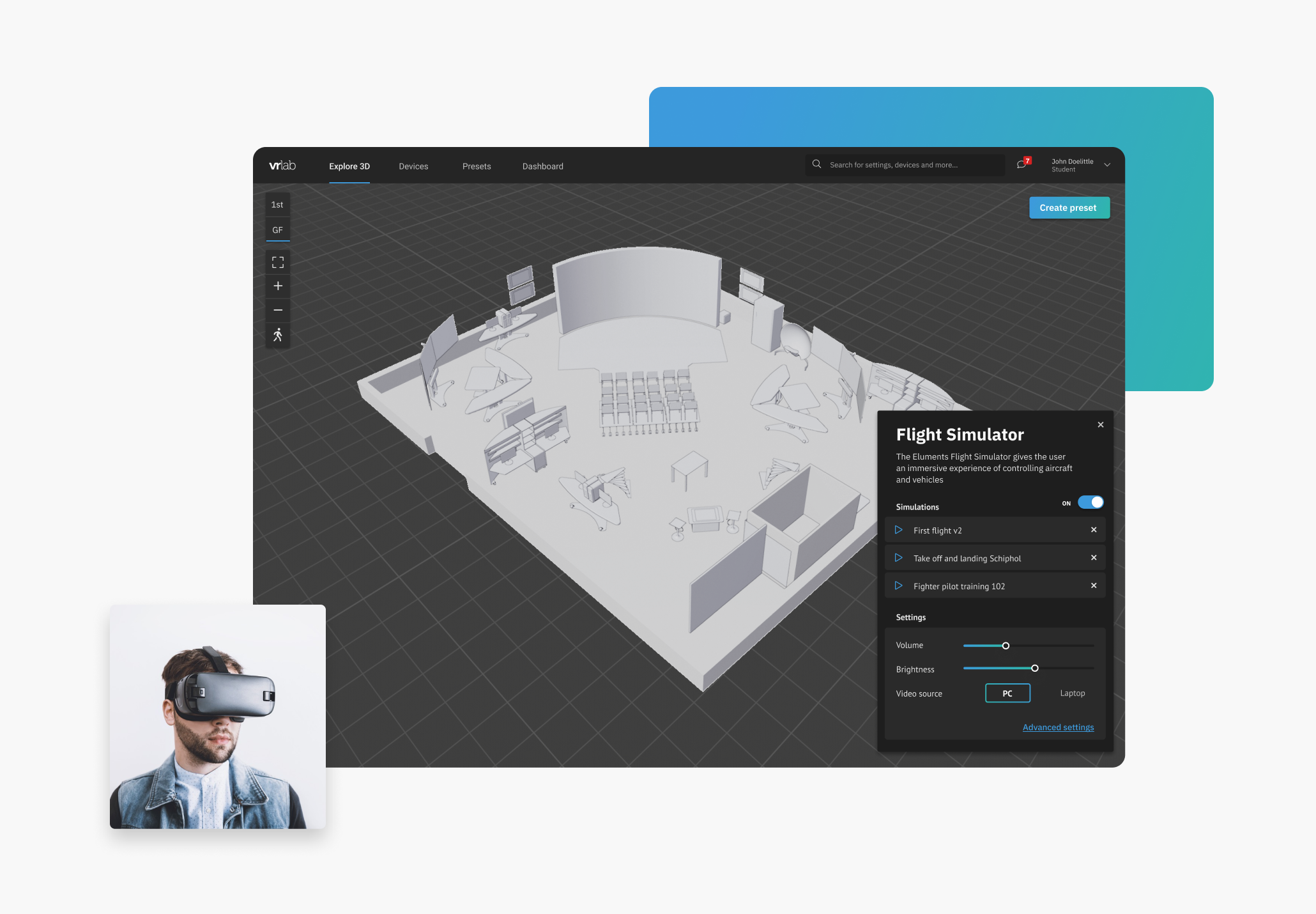
Save states and return to them in an instant
A frequent scenario that emerged from the interviews is that a user configures the vr-tools and environment to start a collaborative session. They often want to use the same settings they had before to continue the work they started. This is now possible with presets that save the entire state of the lab to quickly return to a previously used environment.
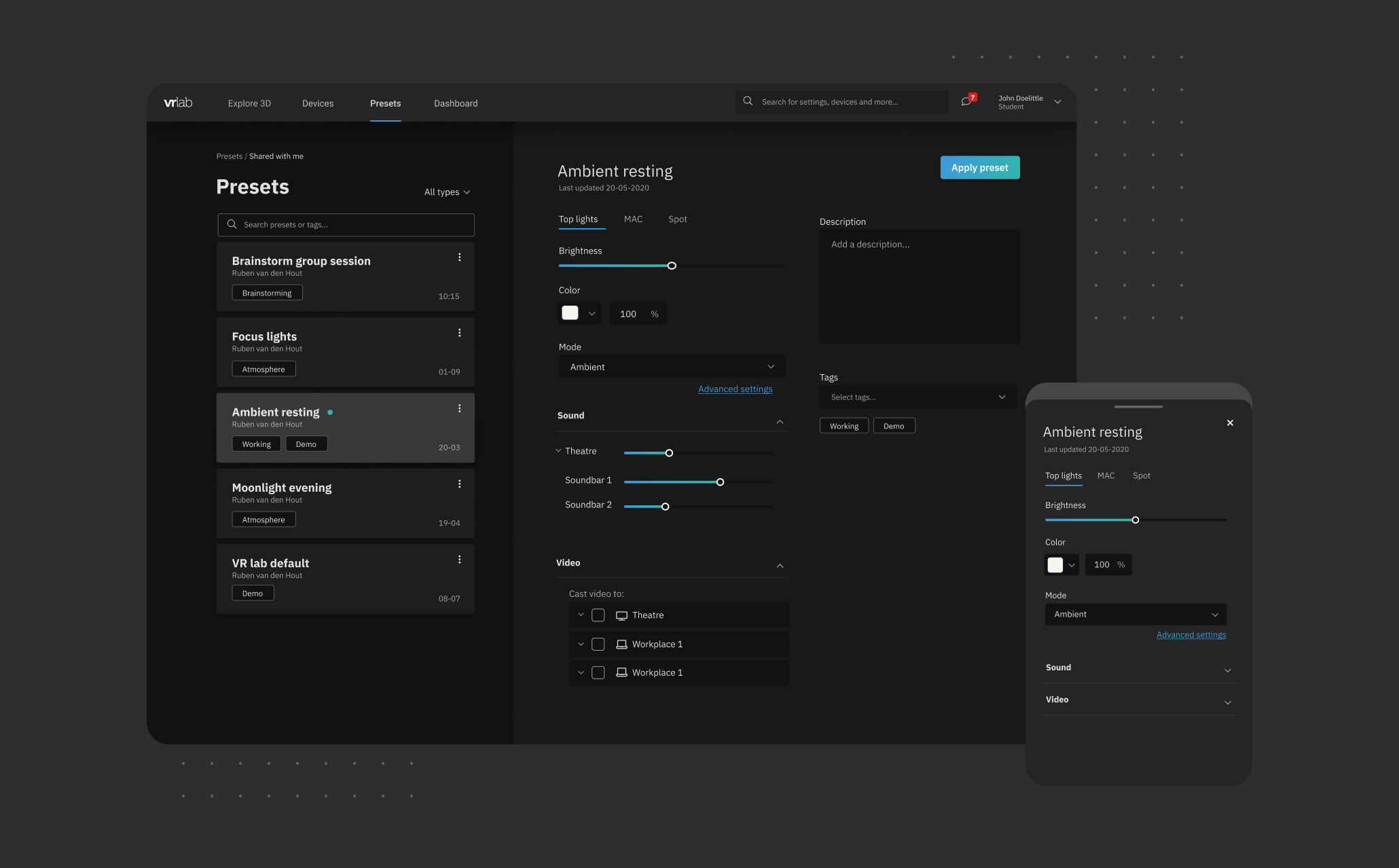
Shared view on availabiliy and performance
Access to a shared calendar within the app provides a simple overview of appointment. Because parts of the lab can be used independently, the areas are defined as rooms in an office. Each area can be booked seperately or the whole lab can be reserved for larger work sessions.
Dashboard graphs give insight in the usage of the lab so it is possible for support personel to identify common issues and continuously improve.
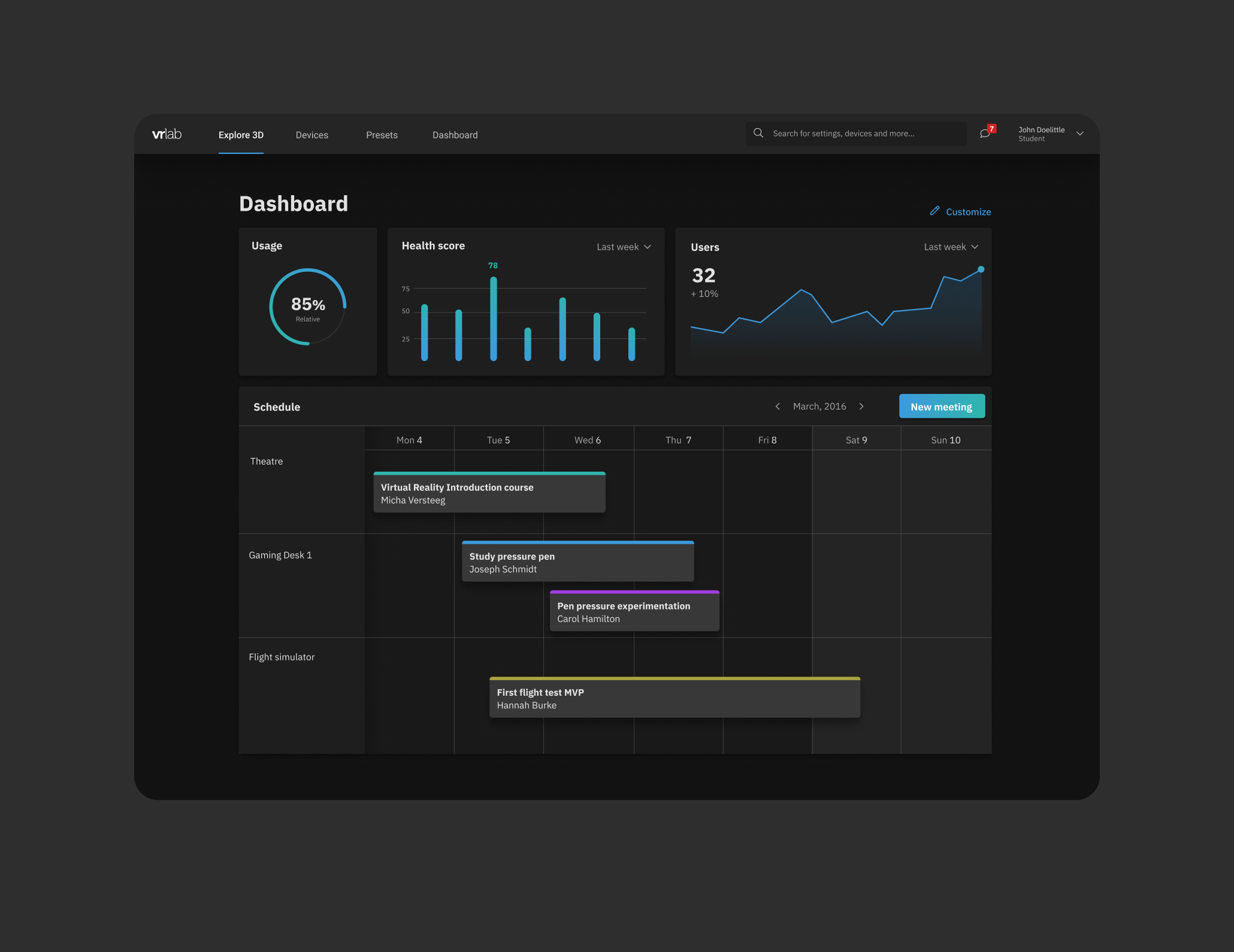

Results
You have seen an analysis and some key solution concepts to improve the accessibiliy of the virtual reality laboratory. So far it has been a largely conceptual exercise of which the basic interaction has been validated with end-users. The concept was positively received by the stakeholders and an other graduate student will continue the work to build a platform that brings this closer to reality.